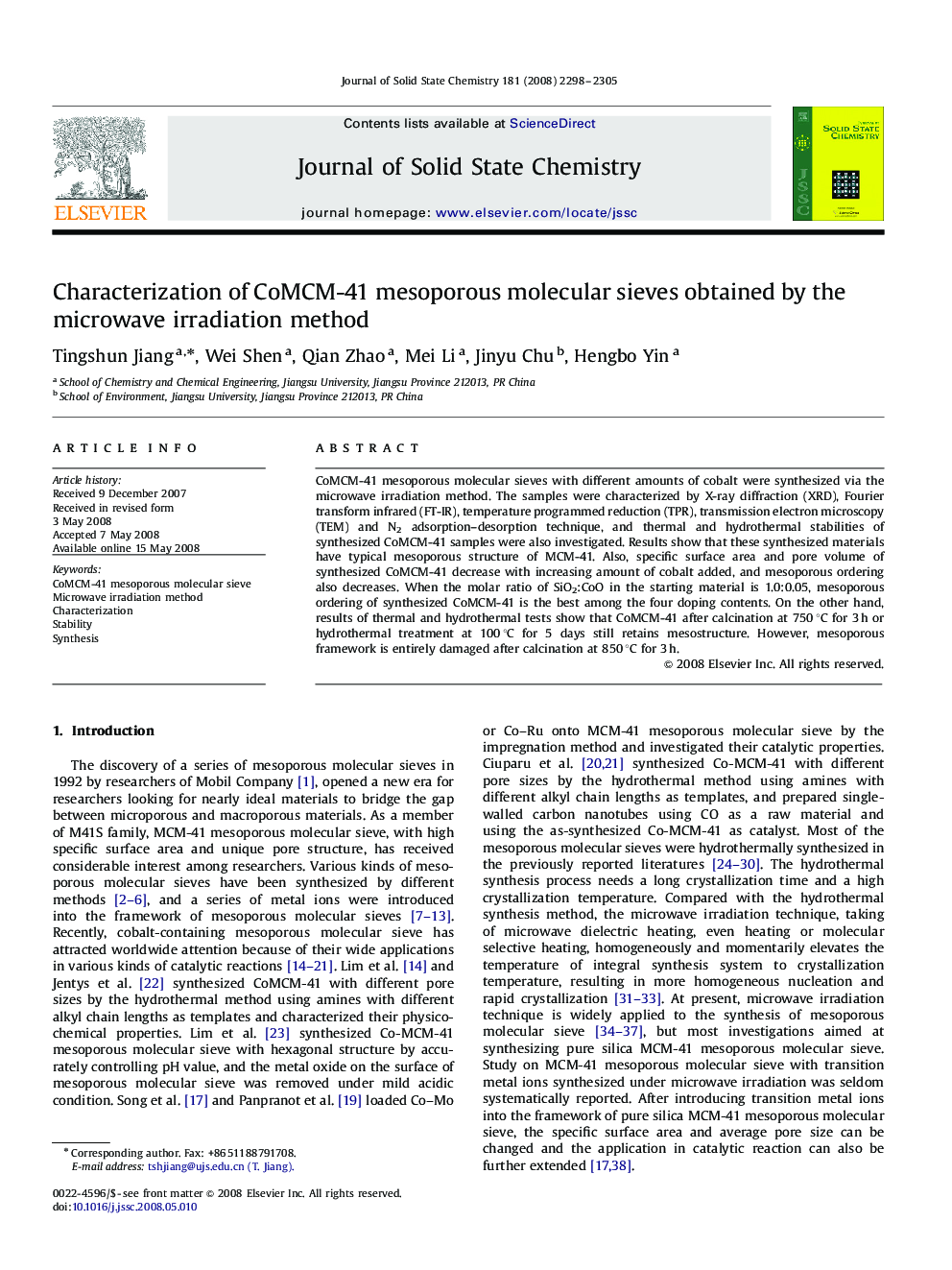| Article ID | Journal | Published Year | Pages | File Type |
|---|---|---|---|---|
| 1332725 | Journal of Solid State Chemistry | 2008 | 8 Pages |
CoMCM-41 mesoporous molecular sieves with different amounts of cobalt were synthesized via the microwave irradiation method. The samples were characterized by X-ray diffraction (XRD), Fourier transform infrared (FT-IR), temperature programmed reduction (TPR), transmission electron microscopy (TEM) and N2 adsorption–desorption technique, and thermal and hydrothermal stabilities of synthesized CoMCM-41 samples were also investigated. Results show that these synthesized materials have typical mesoporous structure of MCM-41. Also, specific surface area and pore volume of synthesized CoMCM-41 decrease with increasing amount of cobalt added, and mesoporous ordering also decreases. When the molar ratio of SiO2:CoO in the starting material is 1.0:0.05, mesoporous ordering of synthesized CoMCM-41 is the best among the four doping contents. On the other hand, results of thermal and hydrothermal tests show that CoMCM-41 after calcination at 750 °C for 3 h or hydrothermal treatment at 100 °C for 5 days still retains mesostructure. However, mesoporous framework is entirely damaged after calcination at 850 °C for 3 h.
Graphical abstractCoMCM-41 mesoporous molecular sieves with different amounts of cobalt were synthesized via the microwave irradiation method. The samples were characterized by X-ray diffraction (XRD), Fourier transform infrared (FT-IR), temperature programmed reduction (TPR), transmission electron microscopy (TEM) and N2 adsorption–desorption technique, and thermal and hydrothermal stabilities of synthesized CoMCM-41 samples were also investigated. The results show that these synthesized materials have typical MCM-41 structure and highly thermal and hydrothermal stabilities.Figure optionsDownload full-size imageDownload as PowerPoint slide
